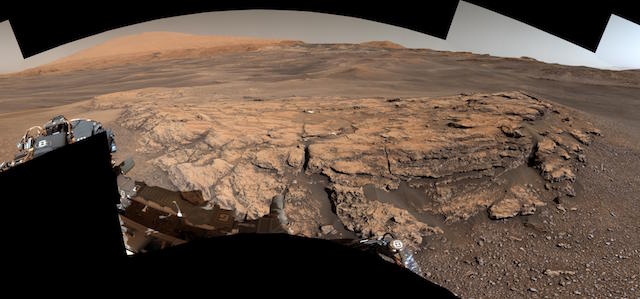 NASA’s Curiosity rover has come a long way since touching down on Mars seven years ago. It has traveled a total of 13 miles (21 kilometers) and ascended 1,207 feet (368 meters) to its current location. Along the way, Curiosity discovered Mars had the conditions to support microbial life in the ancient past, among other things.
NASA’s Curiosity rover has come a long way since touching down on Mars seven years ago. It has traveled a total of 13 miles (21 kilometers) and ascended 1,207 feet (368 meters) to its current location. Along the way, Curiosity discovered Mars had the conditions to support microbial life in the ancient past, among other things.
And the rover is far from done, having just drilled its 22nd sample from the Martian surface. It has a few more years before its nuclear power system degrades enough to significantly limit operations. After that, careful budgeting of its power will allow the rover to keep studying the Red Planet.
Curiosity is now halfway through a region scientists call the “clay-bearing unit” on the side of Mount Sharp, inside of Gale Crater. Billions of years ago, there were streams and lakes within the crater. Water altered the sediment deposited within the lakes, leaving behind lots of clay minerals in the region. That clay signal was first detected from space by NASA’s Mars Reconnaissance Orbiter (MRO) a few years before Curiosity launched.
“This area is one of the reasons we came to Gale Crater,” said Kristen Bennett of the U.S. Geological Survey, one of the co-leads for Curiosity’s clay-unit campaign. “We’ve been studying orbiter images of this area for 10 years, and we’re finally able to take a look up close.” [More at link, including a 360° panorama]








